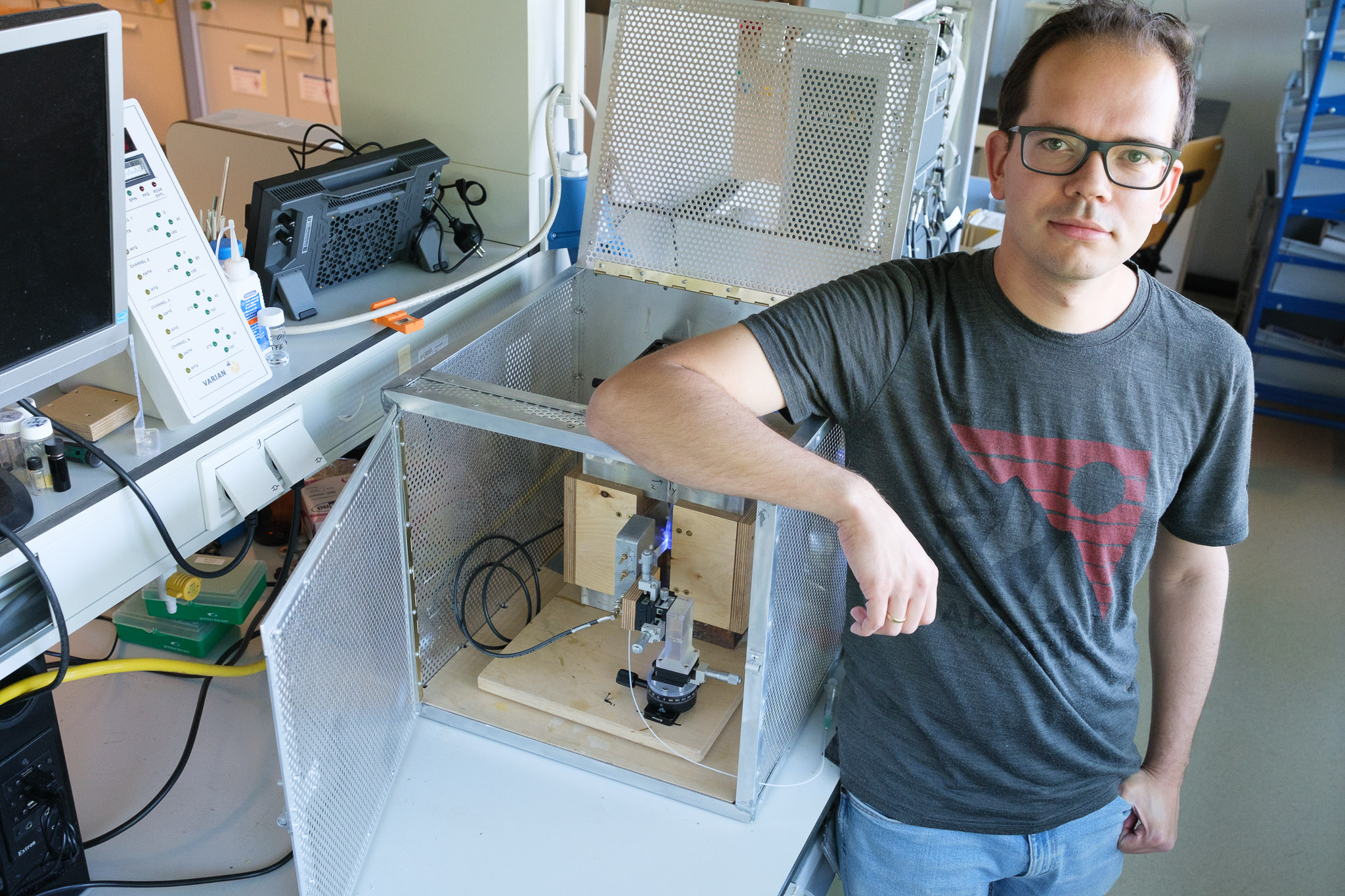‘We need a technique that allows us to look inside the stomach,’ says PhD candidate Morwarid Mayar, ‘so we can see how milk is digested in the body.’ She received her doctorate last Tuesday for her work on techniques for studying the digestion of milk proteins.
‘The cow’s milk we drink is liquid, but inside the body it solidifies to something more like cheese due to the acidic conditions in the stomach and the enzymes there,’ explains Mayar. ‘It is important to know how these structure-changing processes take place in the body because the structure of the stomach contents affects the speed with which the contents are transferred from the stomach to the intestines — which in turn determines how well the nutrients are absorbed.’
Measuring interactions
In her thesis, Mayar describes both the in vitro experiments she performed at the start of her PhD research and a study she carried out with human subjects. ‘Changes in the structure of stomach contents are often studied using animal experiments or in vitro, where researchers simulate conditions in the stomach using test tubes, enzymes and an acidic environment. But we don’t know whether that is comparable to what happens in humans. In my PhD thesis, I show that MRI is a good technique for tracking the digestion of milk proteins in humans.’
Mayar carried out her measurements using an ordinary MRI scanner of the kind found in hospitals. ‘MRI lets us see the interaction between the protein molecules and water molecules. Based on this interaction, we could work out the state of the protein mix at that point: liquid or more solidified. Then we could apply this knowledge to different kinds of milk varying in the extent to which the milk had been heated.’
Measurements in people
‘By playing with the process of heating dairy products, you can influence the digestion stages and therefore the eventual absorption of the nutrients,’ explains Mayar. ‘It might be worthwhile for people with a suboptimal digestion system, for example due to disease, to use a different type of milk if they can digest that type better.’
‘Based on the in vitro experiments, we expected milk that had been heated a long time to pass through the stomach faster than milk that had been heated briefly, but we found the opposite in the study in which we looked at human subjects’ stomachs with the MRI scanner. I thought that was a really surprising result. That is why it will be good to be able to measure such details directly in human subjects rather than relying on lab studies.’

 ‘We want to see how milk is digested in the body and to do this, we need a technique that allows us to look inside the stomach.’ Photo Unsplash/The Humble Co
‘We want to see how milk is digested in the body and to do this, we need a technique that allows us to look inside the stomach.’ Photo Unsplash/The Humble Co 

